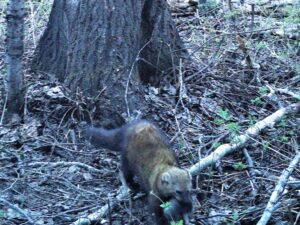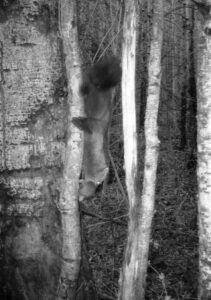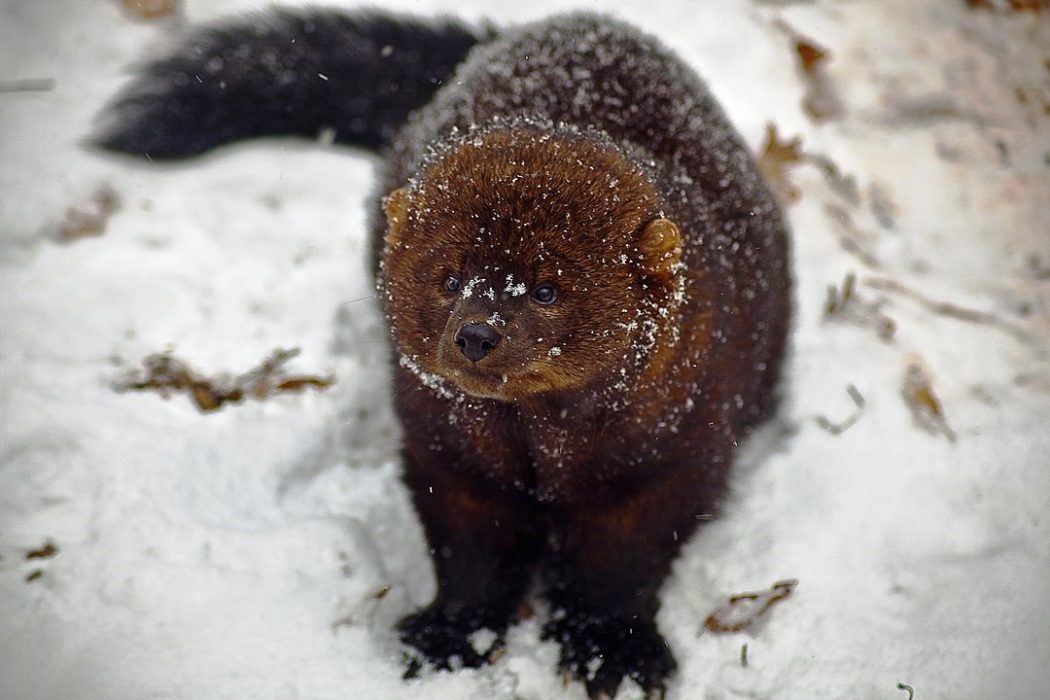Back in 2002, Conservation Northwest launched a partnership with the Washington Department of Fish and Wildlife, the National Park Service and other federal, tribal and Canadian allies to restore fishers to Washington state.
Since then, they’ve successfully reintroduced more than 250 fishers to the Olympic Peninsula and Cascade Mountains.
Fishers, a house-cat sized member of the weasel family, were eliminated from Washington state by the mid-1900s through over-trapping and habitat loss. They were listed as a state-endangered species in 1998.
 Fishers are related to minks, otters, and wolverines, and are native to the forests of Washington, including the Cascade mountain range. This elusive carnivore preys on various small mammals–mountain beavers, squirrels, snowshoe hares, even porcupines.
Fishers are related to minks, otters, and wolverines, and are native to the forests of Washington, including the Cascade mountain range. This elusive carnivore preys on various small mammals–mountain beavers, squirrels, snowshoe hares, even porcupines.
Conservation Northwest helped kick-start this collaborative fisher reintroduction effort by initially funding a feasibility study to determine the best strategy to restore these amazing animals to Washington state. They also helped inform a state recovery plan that was written in 2006, outlining recovery objectives and strategies to restore the species using fishers humanely live-trapped and health-screened by their contractors in northern British Columbia, and later, Alberta.
Advocacy from their staff, members and activists then helped show decision-makers that there is strong public support among Washingtonians for reintroduction. Fisher releases began on the Olympic Peninsula in 2008, in the South Cascades around Mount Rainier in 2015, and in the North Cascades in 2018.
In January of last year, Conservation Northwest’s Washington Fisher Reintroduction Project team met the overall reintroduction goals, marking a significant turnabout for fishers in Washington after their loss from the state for some 75 years.
 Fast forward to last month, April 2021, and a female fisher, F105 Luna (named after the character from the Harry Potter series), was detected on a trail camera moving four kits at her den in western Chelan County.
Fast forward to last month, April 2021, and a female fisher, F105 Luna (named after the character from the Harry Potter series), was detected on a trail camera moving four kits at her den in western Chelan County.
“Seeing one fisher kit born in the wild North Cascades is a wonder; photos showing a group of wild kits is phenomenal,” said Dave Werntz, Conservation Northwest’s Science and Conservation Director and fisher reintroduction program lead. “This new family is an auspicious sign that these reintroduced fishers are finding a good home in the North Cascades.”
Fisher F105 was released on December 13, 2018, west of Darrington, Washington.
“Seeing these fishers find their place and thrive brings so much hope to this ecosystem,” said National Park Service Wildlife Biologist Dr. Jason Ransom. “It is a product of the kind of collaborative conservation we need to steward a healthy ecosystem, across boundaries.”
The nearly 20-year public-private partnership that has successfully restored fishers to Washington is a great example of Conservation Northwest’s collaborative approach to wildlife and wildlands conservation in Washington state and beyond.
Featured photo of a fisher in West Virginia is courtesy of http://www.ForestWander.com.
Photos of Luna carrying her kits to a new den are courtesy of the U.S. National Park Service.

